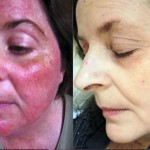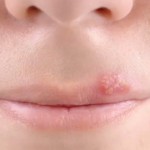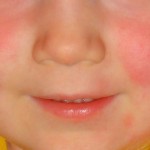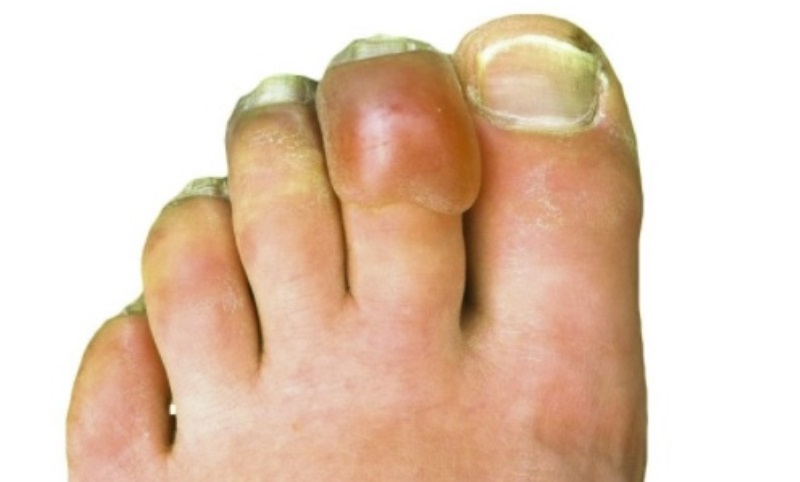Have you ever gotten stung by a bee? Did it hurt? Or was it just an uncomfortable experience? For the first few hours after the sting, it’s really painful, till the sting’s effects subside. Bee stings are more common during the warmer months of the year, when bees are more active, and people are out and about more, out of doors.
If a bee stings you, it’s an act of self-defense. The pain that you experience when a bee stings you, is the poisonous venom contained in the stingers. This is what causes reactions in your body to the sting. If you’re allergic to a bee sting, there’s a possibility that it could be health complication pretty fast, if not addressed immediately.
Symptoms of bee stings
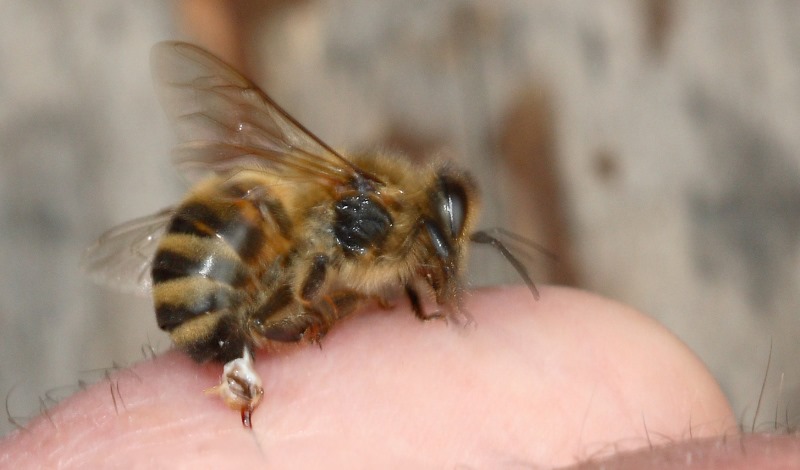
Image source: Google, copyright-free image under Creative Commons License
The symptoms of bee stings vary according to the severity of the sting. Take a look:
In mild cases, the symptoms tend to subside in a couple of days.
- A red welt around the sting site
- A tiny white spot at the actual sting site
- Mild swelling around the sting site
- A sharp burning pain in and around the sting site
Suggested read: 12 practical methods of getting rid of pesky bed bugs once and for all
In severe cases, the symptoms tend to resolve over the course of 5 to 10 days.
- Severe redness in and around the sting site
- Swelling intensifies over the next few days
If the person is allergic to bee stings, the symptoms include:
- Hives and itching in other parts of the body
- Severe swelling in the throat, and/or of the tongue
- Difficulty in breathing
- Nausea and/or vomiting
- Dizziness
- Unconsciousness
Home remedies for bee stings
Seeking medical help in worst cases is the best thing you can do for a person who has been stung by a bee. If the person it allergic, there’s no point in trying home remedies, as many cases, when not sought immediate medical help, have known to be fatal.
However, for mild to moderate symptoms of being stung by a bee, try these home remedies for bee stings, that work effectively, and help reduce the pain.
The two first important steps you need to follow right after you get stung by a bee are:
a. Remove the stinger
When you’re stung by a bee, the stinger is embedded in your skin. The stinger is how the venom gets into your body, and it takes but a few seconds for this to happen.
- Remove the stinger using a pair of tweezers, or your sharp fingernails. Thoroughly rinse the sting area with antiseptic soap and plain water.
- Pat dry with a clean towel and apply some topical antiseptic ointment. Calamine lotion works too, in relieving the itching and swelling.
- Don’t pinch the stinger, as it would only serve to inject more venom into your body.
b. Ice compress
Apply an ice compress on the sting site, which helps bring down the swelling and the redness. Cold temperature on inflamed skin helps reduce the inflammation. Plus, it helps numb the area against the pain.
- Put some ice cubes in a plastic bag or a thin but clean washcloth, and tie it. Hold this compress on the affected area for at least 10-15 minutes.
- Repeat as needed, or every few hours, till the pain, itching, and swelling subside. If you’re out of ice cubes, you can use a bag of frozen vegetables, or a cold water bottle too.
1. Aloe vera

Image source: Pixabay, under Creative Commons License
Aloe vera contains anti-inflammatory properties, which help treat a bee sting effectively. It helps ease the pain, reduce the swelling and the itching at the sting site.
Remedy
- Clean a fresh aloe vera leaf, and slice it open with a knife. Scoop out the fresh aloe vera gel into a clean bowl, and apply it generously over the sting site. Repeat this remedy a few times a day for a few days, till the symptoms subside.
2. Apple cider vinegar

Image source: Google, copyright-free image under Creative Commons License
Apple cider vinegar is a boon when it comes to skin problems, and it’s beneficial for bee stings too. The acetic acid that apple cider vinegar contains helps neutralize the venom, thereby easing the pain, while also reducing the itching and swelling at the sting site.
Remedy
- Take 1 tablespoon of raw, unfiltered apple cider vinegar in a clean bowl. Dip a cotton ball in it and hold the same on the sting site for about 5 to 10 minutes. Repeat this remedy as needed, a few times a day should help resolve the sting.
Pro tip: If you’re out of apple cider vinegar at home, you could use white vinegar instead.
3. Aspirin
Aspirin is so popular because of its fast acting anti-inflammatory properties, which help reduce the pain and swelling at the sting site.
Remedy
- Take 1 regular aspirin and crush it into a fine powder. Add a few drops of water and mix it into a smooth paste. Smear this on the sting site, allowing it to site for a few minutes. Then, rinse it off using tepid water. Repeat this remedy as needed, twice or thrice a day.
Suggested read: 15 superbly effective home remedies for bed bug bites
4. Baking soda
Baking soda is sodium bicarbonate, which is an alkali. Therefore, it is very effective in neutralizing the venom, thereby relieving the pain, swelling, and itchiness at the sting site.
Remedy
- Make a paste using 1 teaspoon of baking soda with a little water. Spread this paste on the sting site, and let it sit for 5-10 minutes, before rinsing it off with tepid water. Repeat this remedy as needed, a few hours later.
5. Basil leaves

Image source: Google, copyright-free image under Creative Commons License
Basil leaves contain numerous beneficial nutrients, which help soothe the inflamed skin around a bee sting site.
Remedy
- Take a handful of basil leaves, and make a paste in a blender. Spread this paste on the sting site, letting it sit for 5 to 10 minutes, before rinsing it off with lukewarm water. Repeat this as needed, a few times a day.
6. Calendula
Calendula is an excellent remedy for bee stings, as it helps relieve the inflammation, thereby helping get rid of the pain and swelling at the sting site.
Remedy
- Take a few calendula flowers and crush them, to extract its juice. Use a blender or a mortar and pestle to extract the juice. Apply this on the site of the sting, leaving it on for 10 to 15 minutes, before rinsing it off with lukewarm water. Repeat this remedy at least twice a day for a few days.
7. Garlic
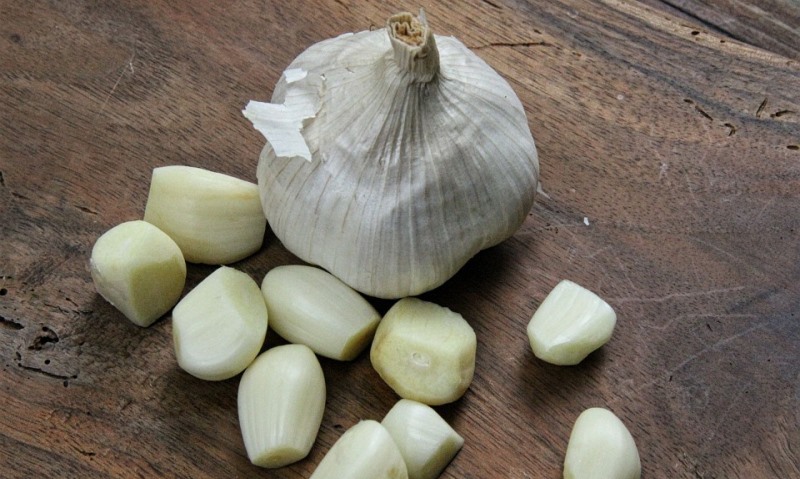
Image source: Google, copyright-free image under Creative Commons License
Garlic contains certain sulfur compounds, which help in alleviating the pain and swelling caused by a bee sting.
Remedy
- Take 1 or 2 cloves of fresh garlic, and crush them to release its juices. Press this on the sting site and cover it with a wet washcloth. Leave it on for 20 to 30 minutes, before rinsing it off with lukewarm water.
8. Honey
Honey contains powerful anti-viral, anti-bacterial, and anti-fungal properties, which help dilute the venom, while also helping reduce the risk of infection at the sting site. Plus, its soothing nature helps alleviate the symptoms rather quickly.
Remedies
- Apply raw, organic honey on the sting site, leaving it on for 10 minutes, before rinsing it off with lukewarm water. Repeat this remedy a few times a day.
- Take equal amounts of honey and turmeric, and mix well to form a smooth paste. Smear this paste on the sting site, letting it sit for 10 minutes, before washing it off with tepid water.
9. Lavender oil

Image source: Pixabay, under Creative Commons License
Lavender oil contains powerful antioxidants which help reduce the inflammation and pain at the sting site. Plus, it helps neutralize the venom left by the stinger.
Remedy
- Apply a drop or two of lavender essential oil on the sting site. No need to rinse it, as your skin will absorb the oil.
10. Mud
This might sound unhygienic and unsanitary, but it works. This remedy helps reduce the pain and the swelling at the sting site.
Remedy
- Take some mud and make a paste using a little water. Smear this mud paste on the sting site, letting it sit for 15 minutes, before rinsing it off with tepid water.
11. Peppermint
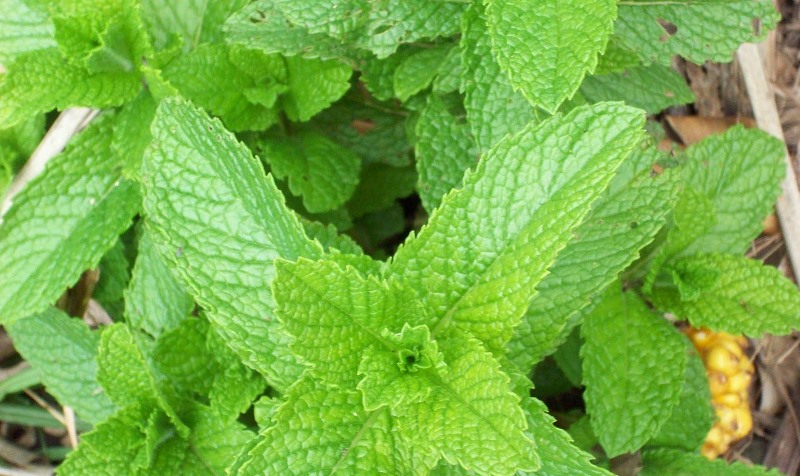
Image source: Pixabay, under Creative Commons License
Peppermint is known to be quite effective in treating a bee sting, thanks to its anti-inflammatory properties, which help reduce the inflammation, pain, and swelling.
Remedies
- Using clean fingertips, gently apply a couple of drops of peppermint essential oil on the sting site, a few times a day. If your skin is sensitive, it would be best to dilute it with a carrier oil like coconut oil or olive oil, before application.
- Take a handful of peppermint leaves and extract its juice. Strain and apply this solution on the sting site. Let it air dry, before washing it off with cool water. Repeat this remedy once or twice a day, as needed.
Suggested read: 10 home remedies to get rid of pesky pimples
12. White toothpaste
White toothpaste contains ingredients that help neutralize the venom, helping reduce the pain and the swelling.
Remedy
- Dab a little white paste on the sting site, letting it sit for a few hours. Then, wash it off using cool water. Repeat this remedy as needed.
Pro tip: Do not use gel, colored, or whitening toothpaste on the affected areas.
These are all the most effective home remedies for bee stings, that help reduce the pain, swelling, itching, and inflammation quickly, giving you relief.
Featured image source: Google, copyright-free image under Creative Commons License



